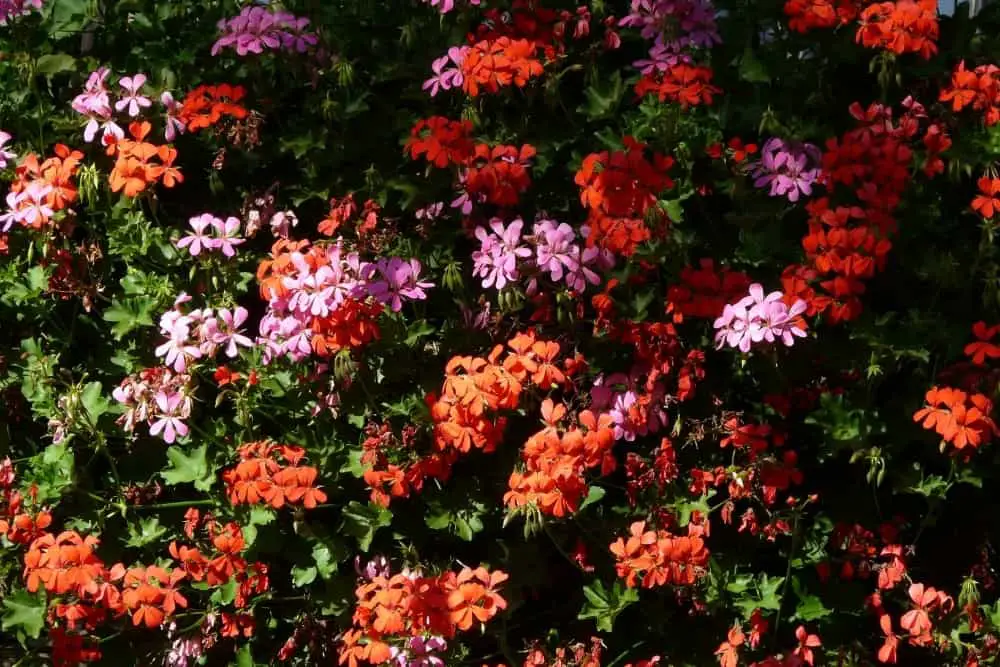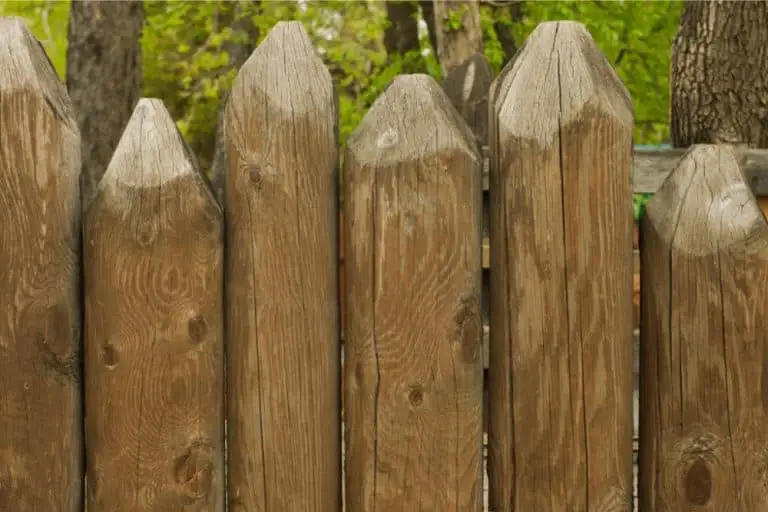How To Deadhead Geraniums The RIGHT Way!
Are you wondering How To Deadhead Geraniums? Here is a quick and easy guide so your geraniums can blossom and grow fast!
Deadheading flowers is one of the most important parts of the maintenance regime. While it might seem cruel to pull off dead flowers from a colourful bush, it’s actually a vital care requirement.
Not only does deadheading get rid of the mushy, wilted, and gross flowers that inhabit a flower bush, but it encourages the growth of new flowers.
Geraniums are a popular genus of flowers found in most backyards. With over 400 species of geraniums, these flowers come in all different shapes, sizes, and colours. The best part? These hardy flowers require little care to flourish and thrive in the ways they do.
Place your Geraniums on indoor hanging baskets for an aesthetically pleasing decor.

If you’re new to the world of deadheading, or perhaps you’re a newbie when it comes to geraniums, we’ve got you covered. Here is everything you need to know about how to deadhead geraniums!
Related Posts:
- How To Keep Squirrels Out Of Flower Pots [2022 Guide]
- How To Propagate Orchids [ An Easy 2022 Guide]
- Top 11 Best Shears On The Market
- How To Prevent Weeds In Flower Beds?
DISCLAIMER
Some of the links on here are affiliate links and I may earn if you click on them, AT NO EXTRA cost to you. Hope you find the information here useful! Thanks.
Is It Best To Deadhead Geraniums?
Yes! Geraniums are notoriously low-maintenance flowers that just need to be deadheaded every once in a while. There are several benefits to deadheading any flowers, particularly geraniums, aside from the fact deadheading allows you to keep the flower bush neat and tidy. These benefits include:
- Deadheading encourages new growth of flowers
- It conserves the plant’s energy
- Removing dead flowers reduces the risk of fungal infections from debris
- It encourages the new flowers to grow even larger
- Allows the plant the “breathe”
When a flower dies on a geranium, the plant won’t know the flower is dead. Instead, it will continue to use all of its stored energy (from photosynthesis, natural gases, and the soil) to feed every aspect of the plant, including the dead flower.
In its attempts to bring the plant back to life, the plant is actually wasting energy on something that cannot be reborn.
As it continues to do this, the rest of the plant suffers from the lack of energy as the plant puts its focus on the dead flowers, which eventually shortens the plant’s overall lifespan.
Once you have removed these dead flowers, the energy in the plant is conserved. The plant now has an appropriate amount of energy to continue its growing process, which will then encourage a new bud to bloom in the place of the dead flower.
Thus, the cycle continues!
Note– If you want to make your green fingers happier and your life easier, you can use this affordable 83 pieces ultimate gardening set to help you garden like a pro!
How To Deadhead Geraniums
Deadheading a plant sounds a lot more violent than it actually is. This maintenance requirement is easy to do and takes very little time. Here are our top two ways on how to deadhead geraniums!

The Plucking Method
- Identify the dead flowers on the geranium. They will look wilted, darker in color, and might feel sticky. These flowers might also look dry with the petals falling off.
- With clean hands, lightly tug at the dead flowers. If you’re not sure whether the flower is completely dead, give it a gentle tug. The flower will still be partially alive if there is resistance, in which case, just leave the plant to potentially heal the flower. In some cases, the flower will heal if it’s not completely dead yet.
- If there is no resistance and the flower moves away from the stem, gently pluck the deadened flower away and dispose of it.
- Repeat these steps until the dead flowers have all been removed.
- You can either throw the dead flowers in the trash or put them in the compost.
The plucking method is incredibly easy and the least time-consuming, but there is another method that is slightly more beneficial to promoting healthy regrowth.
Want to spruce up your geraniums and prevent them from wilting? Here is an organic Bud and Bloom fertiliser to keep your flowers happy, bright and healthy!

The Stalk Method
- Identify the dead flowers on the geranium.
- Follow the dead flowers down to their individual stalks. Most of the time, the stalk will also lose its nutrients and will appear dead, too. Even if the stalk is an off-green color, it probably won’t achieve regrowth without being removed.
- Follow the stalk down to the base until you reach the first leaf junction. Plants store their starch (energy) in their leaves, so this part is essential for regrowth and shouldn’t be removed.
- Either with clean hands or sterilized scissors, snip the stalk just above the leaf junction. You’re welcome to pinch the stalk with your fingertips or fingernails, just make sure your hands are totally clean to prevent spreading bacteria.
- Repeat these steps until the dead flowers and their stalks have all been removed.
When To Deadhead Geraniums
Geraniums can be deadheaded whenever some of the flowers look like they are dead and need to be removed. This generally happens in the blooming season, which starts in spring and ends in late fall. In some cases, geraniums are known to continue blooming into winter.
To be honest, there is no specific time when it is best to deadhead geraniums. You’ve just got to keep an eye on these flowers daily and remove the dead flowers as and when. As it takes minimal time to deadhead a geranium, you should incorporate this into your watering routine in the evenings.
Keep your flowering plants looking neat and healthy by using pruners fit for the task!

What If I Don’t Deadhead My Geraniums?
The dead flowers on a geranium will eventually fall off, however, it’s not recommended to avoid deadheading your geraniums. While the deadened flowers will remove themselves at some point, this is a huge waste of energy for the plant and prevents regrowth from happening.
The plant will focus most of its energy on trying to revive the dead flowers, which will then restrict the rest of the healthy plant from the essential energy. Eventually, the whole flower bush will appear sparse and will stop blooming.
When you deadhead geraniums, however, this encourages a spectacular regrowth that allows the whole plant to thrive in its colourful beauty. As these results are so magnificent, it only makes sense to commit to regular deadheading techniques to keep your plant alive and healthy.
Plus, deadheading takes such little time out of your day, and the more you do it, the less you will have to do in the future. Think of deadheading like human hair – the dead bits need to be trimmed to encourage healthy growth!
For porous soil in your flowering plants, use terracotta pots to keep your plants happy and healthy!





![Why Is My Plant Drooping?[And How To Fix It!]](https://aboveandbeyondgardening.com/wp-content/uploads/2021/10/Why-Is-My-Plant-Drooping-768x735.jpg)
![When To Harvest Jalapeños? [+Mistakes To Avoid]](https://aboveandbeyondgardening.com/wp-content/uploads/2021/10/When-To-Harvest-Jalapenos-768x512.jpg)

![15 Companion Plants For Asparagus To Help It THRIVE! [2023]](https://aboveandbeyondgardening.com/wp-content/uploads/2022/11/companion-plants-for-asparagus-768x510.jpg)
![How To Harvest Sage Without Killing The Plant & What To Avoid! [2023]](https://aboveandbeyondgardening.com/wp-content/uploads/2022/10/How-to-harvest-sage-without-killing-the-plant-768x512.jpg)